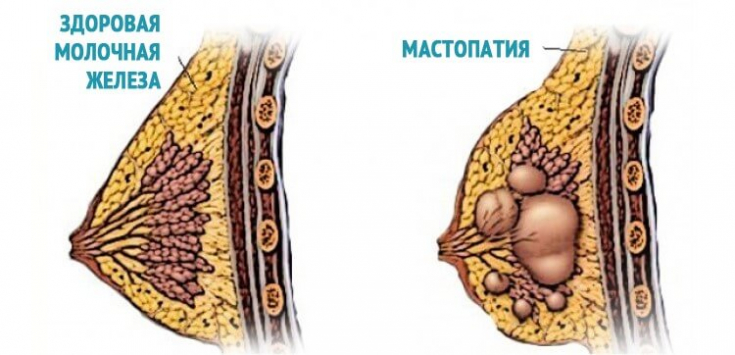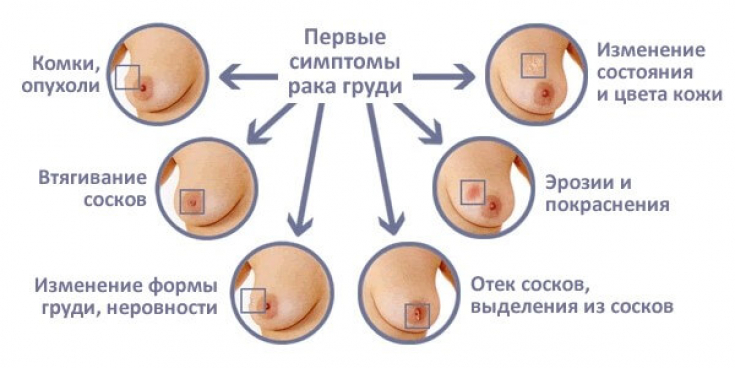Chest pain is one of the most common symptoms that clinicians encounter. And, as a rule, it is cyclically temporary and associated with hormonal fluctuations.
When faced with patients who complain of breast pain, clinicians should determine whether the pain is from the breast or from a non-breast source. If the problem is related to the breast, further treatment depends on its nature, severity and duration.
At estet-portal.com we will understand why the chest may hurt, as well as how to interview and examine patients with chest pain in order to correctly establish the diagnosis.
- Why the breast hurts: a patient questioning if there is pain in the mammary glands
- Physiological discomfort in the mammary glands
- Chest pain due to changes in the mammary glands themselves
- Chest pain caused by non-breast factorsram
Why does the chest hurt: a patient survey in the presence of soreness of the mammary glands
The first thing to ask the patient is to find out the cause of chest pain, whether the pain is unilateral or bilateral, localized or diffuse.
If the pain in the breast is localized, ask the patient to indicate the location, if possible, with one finger and specify the type of pain, whether the pain radiates, whether it is constant or intermittent, whether the pain is associated with menstruation.
Questioning at this stage is intended to differentiate pathological changes from benign lesions of physiological origin.
Injuries should be considered during sexual activity, sports, or work specifics that require the use of one hand more than the other.
At what age is it appropriate to have a mammogram
It is also important to find out if the patient is taking birth control pills and other medications that may affect the condition of the mammary glands.
In diseases of the mammary gland, pain is felt in the breast itself, but due to features of the innervation of the chestdi, pain may also radiate towards the back, base of the neck or medial side of the arm.
Physiological discomfort in the mammary glands
4-5 days before the start of the menstrual cycle blood flow to the breast increases significantly. Breast volume can increase up to 25%.
At this time, most women experience varying degrees of discomfort. Usually these symptoms disappear after menstruation.
Mammography: disappointment in breast examination
The increase in severity and duration of these symptoms is one of the most common reasons premenopausal patients seek medical attention for chest pain.
Many women whose complaints are caused by hormonal fluctuations are misdiagnosed with fibrocystic breast disease.

Cyclic pain, tenderness, and bulking that are bilateral, chamost often absolutely physiological.
Chest pain caused by changes in the mammary glands itself
Cyclic pain due to fibrocystic breast disease may not differ much from that in the norm. However, pain in the chest with fibrocystic mastopathy occurs at the age of 30-50 years, and adolescents usually complain of physiological discomfort in the chest.
Differential diagnosis of fibrocystic mastopathy requires an ultrasound examination. After all, this disease is accompanied by fibrosis and adenosis.

Breast pain and tenderness is usually associated with benign processes, but no direct link between breast pain and breast cancer has been found. Chest pain caused by factors other than the mammary glands
There are causes of chest pain that are not related to fibrocystic breast disease or physiological changes:
- cervical or dorsal sciatica
- can cause soreness and complaints of chest pain; Tietze's syndrome
- usually causes unilateral chest pain; Mondor's disease
- (thrombophlebitis of the thoracoepigastric vessels) is always associated with pain in the lateral and lower part of the breast, which usually subsides spontaneously after 1-3 weeks; other causes of breast pain are shingles, trauma, infections, ductal ectasia, and stasis.
- Benign neoplasms (fibroadenoma, intraductal papilloma) are rarely associated with breast pain and tenderness.
Some doctors believe that there are different types of chest pain, depending on the etiological factor:
Fibrocystic pain is often described as
- "heavy or milky breasts";
- with cervical or spinal sciatica, the pain is "sharp and radiant"
- ; with Tietze's syndrome - «aching pain»
- ; in case of injury - "dull pressing or stabbing pain";
- in infections - "throbbing pain"
- ; in ductal ectasia - "itching, burning, or drawing pain."
Telegram! If a thorough history, physical examination, mammography, and ultrasound do not reveal a clear cause of pain, then the condition does not require treatment. However, if symptoms persist without remission for 2-3 months, follow-up examinations are scheduled.
More useful and interesting information on our channel onYouTube!






Add a comment